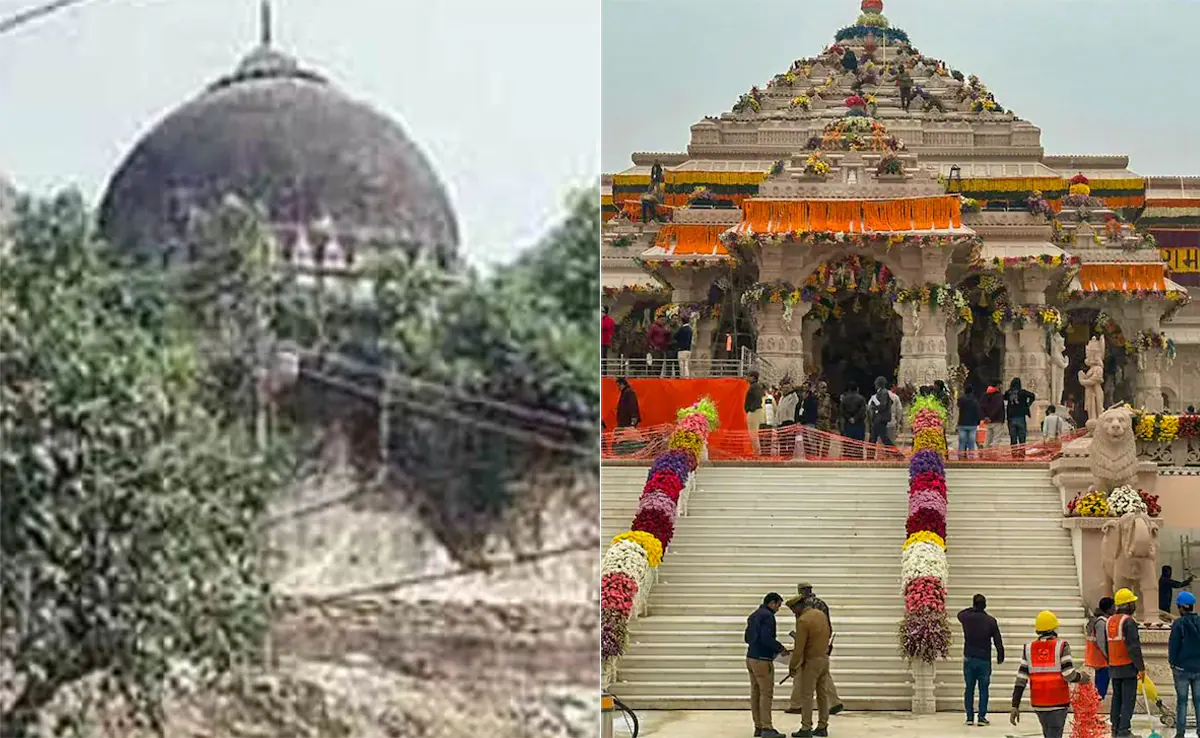Ayodhya, one of the seven holiest cities in Hinduism, is believed to be the birthplace of Lord Rama, the seventh incarnation of Lord Vishnu. The Ram Mandir in Ayodhya has been at the center of India’s spiritual, cultural, and political landscape for centuries. Its history is marked by devotion, conflict, and ultimately, resolution.
Here is a comprehensive timeline tracing the evolution of the Ram Mandir:
🕉️ Ancient to Medieval Periods
c. 7,000 – 4,000 BCE (Mythological Era):
According to the Ramayana, Ayodhya was the capital of the Ikshvaku dynasty, ruled by Lord Rama. The Ram Janmabhoomi is considered his exact birthplace.
1st Century CE – 11th Century CE:
Hindu scriptures and historical accounts suggest temples existed in Ayodhya honoring Lord Rama. The site held great religious and cultural importance.
1528 CE:
The Mughal general Mir Baqi, under Emperor Babur, is believed to have built the Babri Masjid at the Ram Janmabhoomi site. Many Hindus believe it was constructed after demolishing a pre-existing Ram temple.
⚔️ Colonial Period & Early Legal Battles
1853:
First recorded communal clashes between Hindus and Muslims over the site.
1859:
British authorities construct a fence to separate Hindu and Muslim areas of worship. Hindus are allowed to worship outside the mosque.
1885:
Mahant Raghubir Das files the first legal suit to build a temple on the site. The court denies the request.
📜 Post-Independence Disputes & Legal Developments
December 22, 1949:
Idols of Lord Rama are placed inside the Babri Masjid. The government declares the site disputed and locks the gates.
1950–1961:
Several legal cases are filed by both Hindu and Muslim parties seeking ownership or the right to worship at the site.
1986:
A local court orders the gates to be unlocked, allowing Hindu worship. This move triggers nationwide protests from Muslim groups.
1989:
The Vishwa Hindu Parishad (VHP) lays the foundation stone for a Ram temple near the disputed structure.
🧱 Demolition and Aftermath
December 6, 1992:
During a political and religious rally organized by the VHP, Shiv Sena, and BJP, the Babri Masjid is demolished. The event sparks widespread communal violence across India.
1993:
The central government acquires 67 acres surrounding the site and refers the issue to the Supreme Court for legal resolution.
⚖️ Legal Resolution and Temple Construction
2002–2010:
The Archaeological Survey of India (ASI) conducts excavations and reports findings of a large temple-like structure beneath the Babri Masjid.
September 30, 2010:
The Allahabad High Court divides the disputed land into three parts among Hindus, Muslims, and the Nirmohi Akhara.
2011:
The Supreme Court stays the High Court decision and takes over the case.
November 9, 2019:
In a historic and unanimous verdict, the Supreme Court awards the entire disputed land to Hindus for the construction of a Ram temple. Muslims are allotted 5 acres in Ayodhya to build a mosque.
🛕 Construction and Inauguration
August 5, 2020:
Prime Minister Narendra Modi performs the Bhoomi Pujan and lays the foundation stone for the Ram Mandir.
January 22, 2024:
The Pran Pratishtha (idol consecration) ceremony is performed in the newly constructed temple, marking a spiritual and cultural milestone for millions.
📍 Final Thoughts
The journey of the Ram Mandir is more than just the building of a temple. It represents the spirit of faith, centuries of devotion, and India’s pursuit of justice and reconciliation. As Ayodhya transforms into a major religious and tourist hub, the temple stands as a symbol of cultural revival and spiritual pride.
